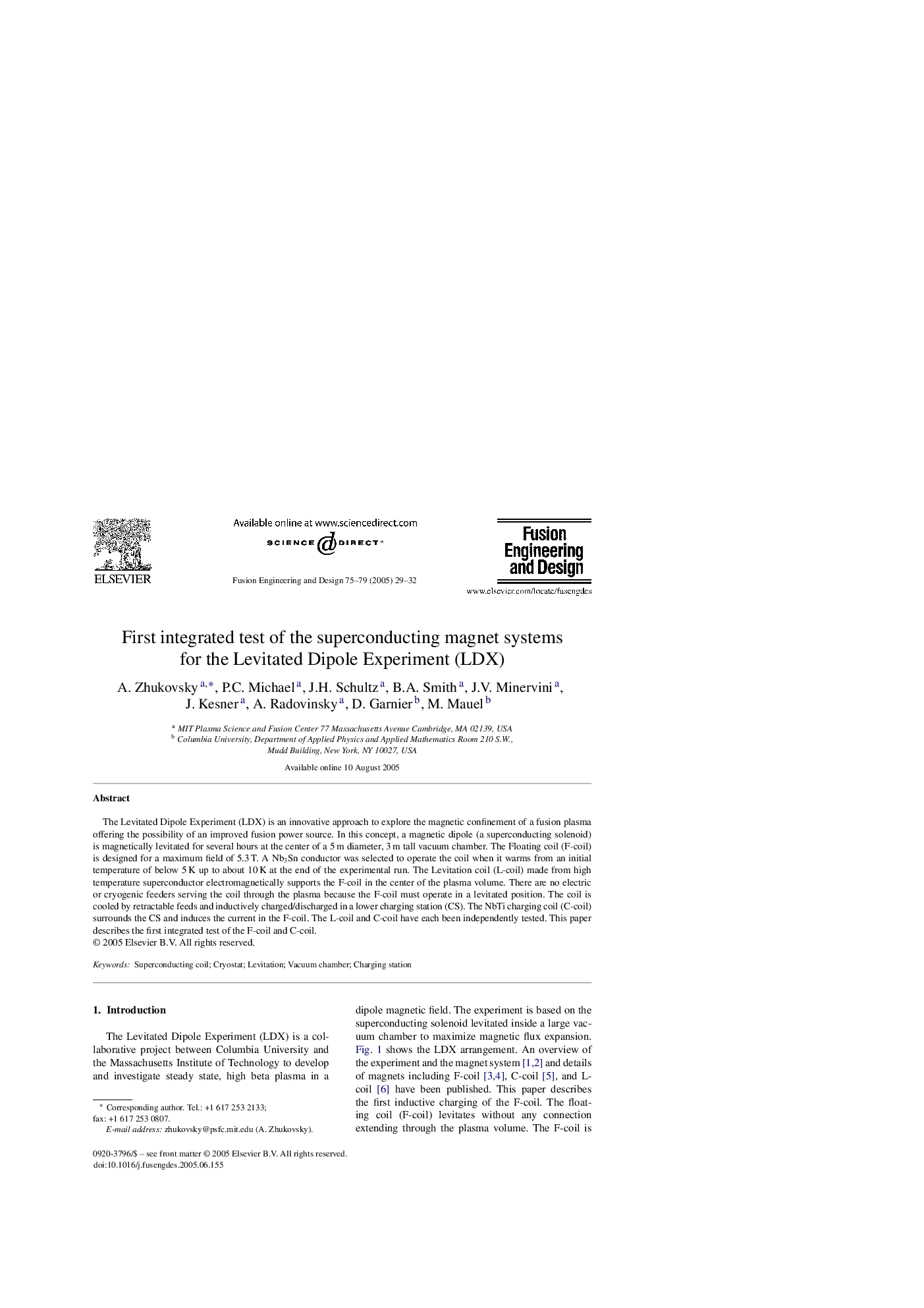| Article ID | Journal | Published Year | Pages | File Type |
|---|---|---|---|---|
| 9638199 | Fusion Engineering and Design | 2005 | 4 Pages |
Abstract
The Levitated Dipole Experiment (LDX) is an innovative approach to explore the magnetic confinement of a fusion plasma offering the possibility of an improved fusion power source. In this concept, a magnetic dipole (a superconducting solenoid) is magnetically levitated for several hours at the center of a 5Â m diameter, 3Â m tall vacuum chamber. The Floating coil (F-coil) is designed for a maximum field of 5.3Â T. A Nb3Sn conductor was selected to operate the coil when it warms from an initial temperature of below 5Â K up to about 10Â K at the end of the experimental run. The Levitation coil (L-coil) made from high temperature superconductor electromagnetically supports the F-coil in the center of the plasma volume. There are no electric or cryogenic feeders serving the coil through the plasma because the F-coil must operate in a levitated position. The coil is cooled by retractable feeds and inductively charged/discharged in a lower charging station (CS). The NbTi charging coil (C-coil) surrounds the CS and induces the current in the F-coil. The L-coil and C-coil have each been independently tested. This paper describes the first integrated test of the F-coil and C-coil.
Related Topics
Physical Sciences and Engineering
Energy
Energy Engineering and Power Technology
Authors
A. Zhukovsky, P.C. Michael, J.H. Schultz, B.A. Smith, J.V. Minervini, J. Kesner, A. Radovinsky, D. Garnier, M. Mauel,
